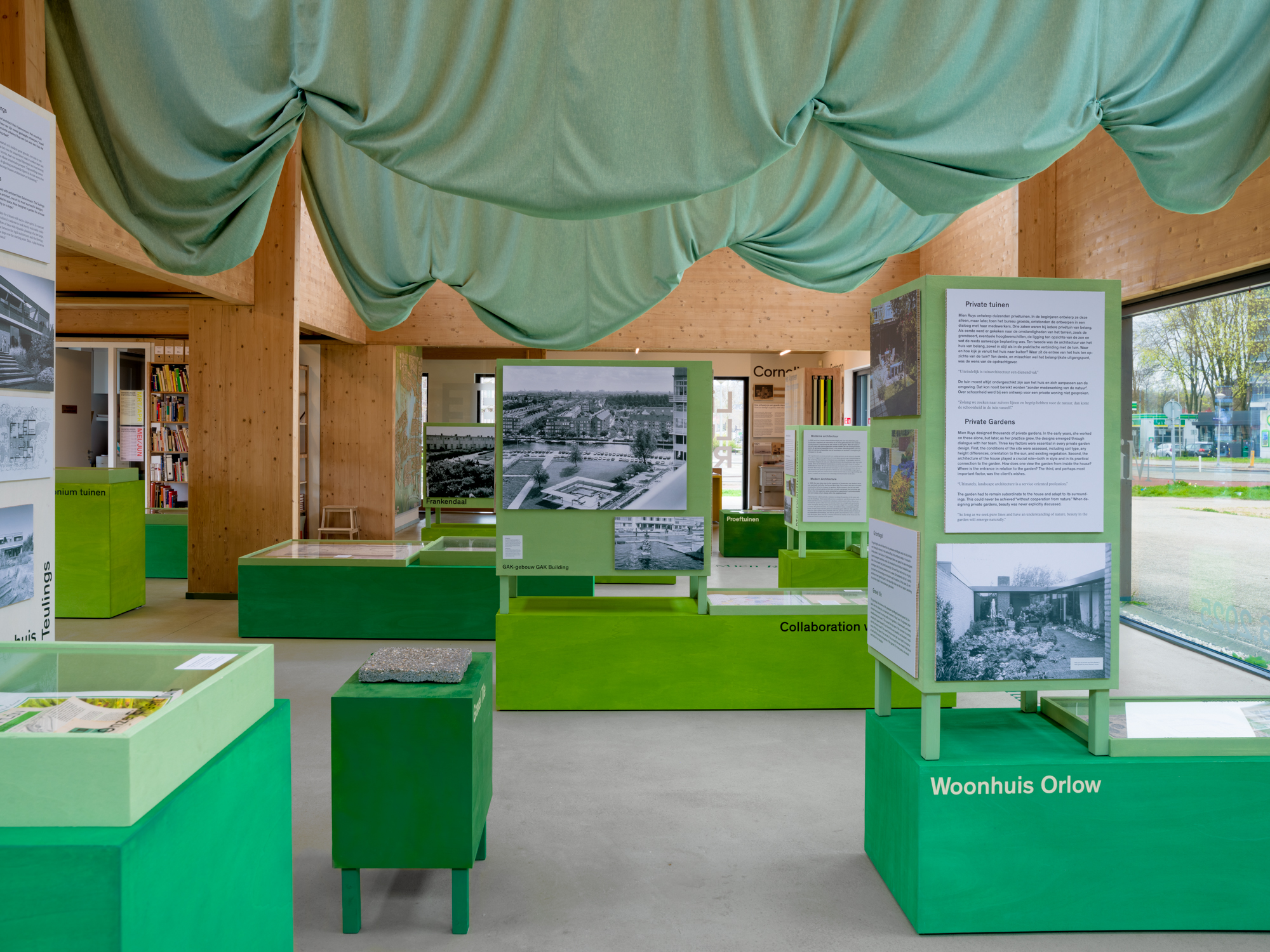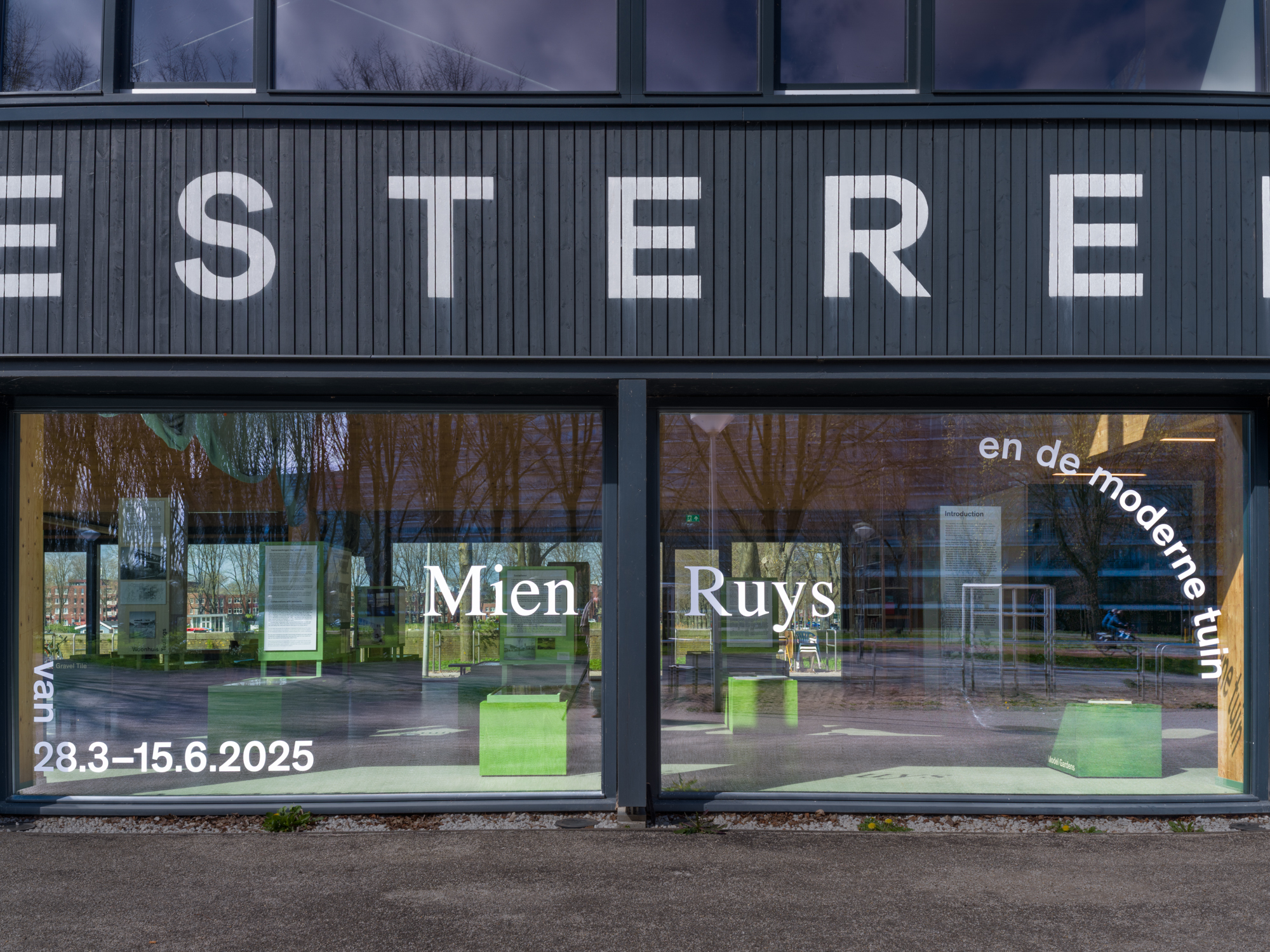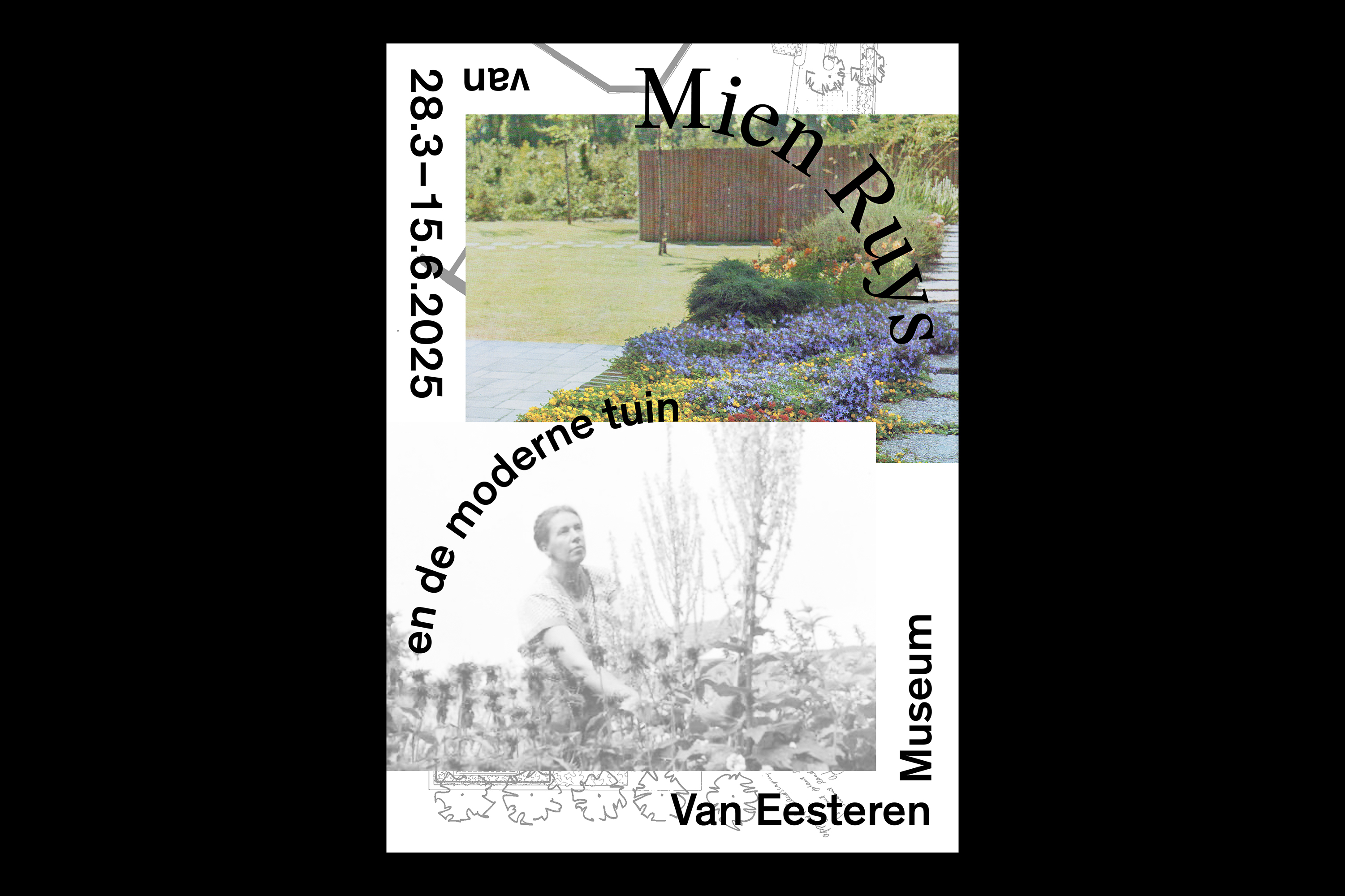Mien Ruys and the Modern Garden
Van Eesteren Museum
Exhibition
Divers
2025








Graphic identity for the exhibition Mien Ruys and the Modern Garden. Mien Ruys (1904–1999) is one of the best-known Dutch garden designers of the twentieth century. Her work—combining an entirely new, clean visual language with lush planting—was revolutionary in both Dutch and international garden architecture. She was among the first designers to focus primarily on the use of perennial plants in the garden, using her experimental gardens to discover and apply new species.
The exhibition focuses on the gardens in Amsterdam, particularly in the post-war expansion areas built from the 1950s onwards. These AUP (General Expansion Plan) districts were designed according to the principles of Nieuwe Bouwen, in which architectural groups such as De 8 and De Opbouw took the lead. Mien Ruys shared the modernist views of these architects and soon joined the group. This marked the beginning of many collaborations with architects such as Merkelbach, Van Eesteren and Bonnema.
Where, around 1900, a garden was still a privilege reserved for the upper classes, this idea slowly began to change in the twentieth century. Mien Ruys believed that everyone should have access to a garden, as nature enhances human well-being. Within the iconic post-war strip and courtyard housing, she successfully applied her socialist ideas by designing communal gardens for social housing. The Geuzenhof and the diagonal designs for the Frankendaal neighbourhood are the first examples of a long series of communal gardens Ruys created for the city of Amsterdam.
With her concept of ready-made borders, she also democratized the garden. These border packages—purchased at V&D or at the nursery and planted by people in their own gardens—allowed her plant expertise to reach a wide audience. She also devised other clever garden solutions, such as using railway sleepers to create height differences and developing the grion tile for a clean yet natural look. Mien Ruys’ style is recognisable by the perennial borders and the geometric forms in her gardens. The clean lines give structure to the lushness and unpredictability of nature, with “simplicity” forming the core of good design.
Spatial design: Monadnock
Curation: Jorn Konijn, Mijke Tonnon
Photos: Gaf van Baalen
The exhibition focuses on the gardens in Amsterdam, particularly in the post-war expansion areas built from the 1950s onwards. These AUP (General Expansion Plan) districts were designed according to the principles of Nieuwe Bouwen, in which architectural groups such as De 8 and De Opbouw took the lead. Mien Ruys shared the modernist views of these architects and soon joined the group. This marked the beginning of many collaborations with architects such as Merkelbach, Van Eesteren and Bonnema.
Where, around 1900, a garden was still a privilege reserved for the upper classes, this idea slowly began to change in the twentieth century. Mien Ruys believed that everyone should have access to a garden, as nature enhances human well-being. Within the iconic post-war strip and courtyard housing, she successfully applied her socialist ideas by designing communal gardens for social housing. The Geuzenhof and the diagonal designs for the Frankendaal neighbourhood are the first examples of a long series of communal gardens Ruys created for the city of Amsterdam.
With her concept of ready-made borders, she also democratized the garden. These border packages—purchased at V&D or at the nursery and planted by people in their own gardens—allowed her plant expertise to reach a wide audience. She also devised other clever garden solutions, such as using railway sleepers to create height differences and developing the grion tile for a clean yet natural look. Mien Ruys’ style is recognisable by the perennial borders and the geometric forms in her gardens. The clean lines give structure to the lushness and unpredictability of nature, with “simplicity” forming the core of good design.
Spatial design: Monadnock
Curation: Jorn Konijn, Mijke Tonnon
Photos: Gaf van Baalen
